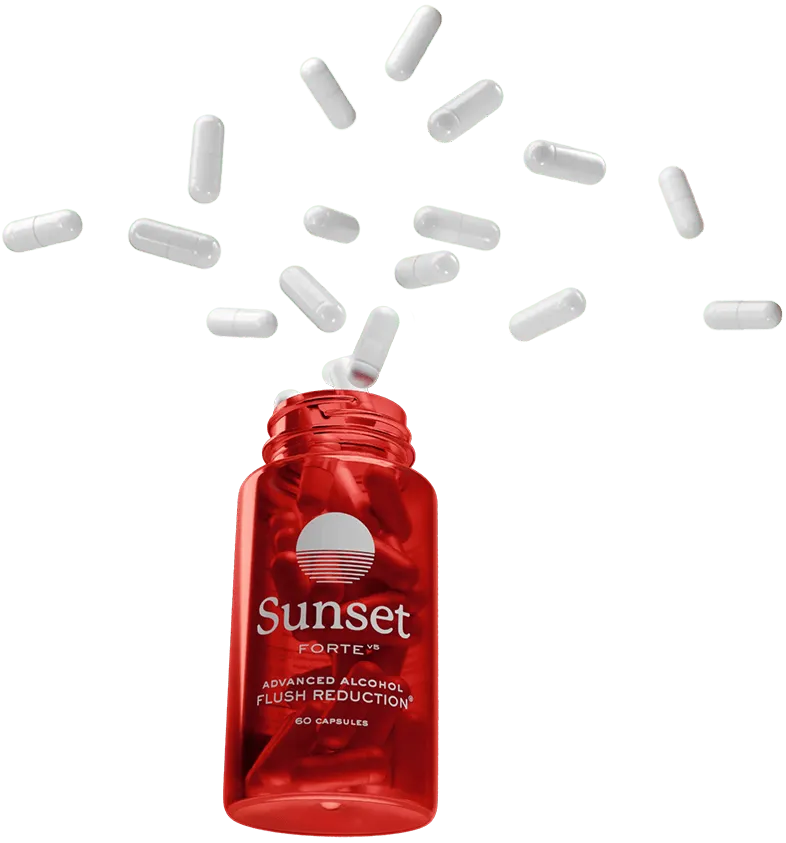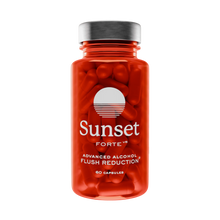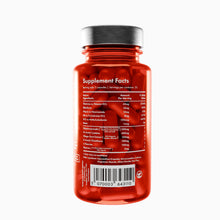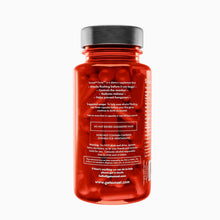Pepcid and Alcohol: Dangers of Using Zantac & Pepcid for Asian Glow
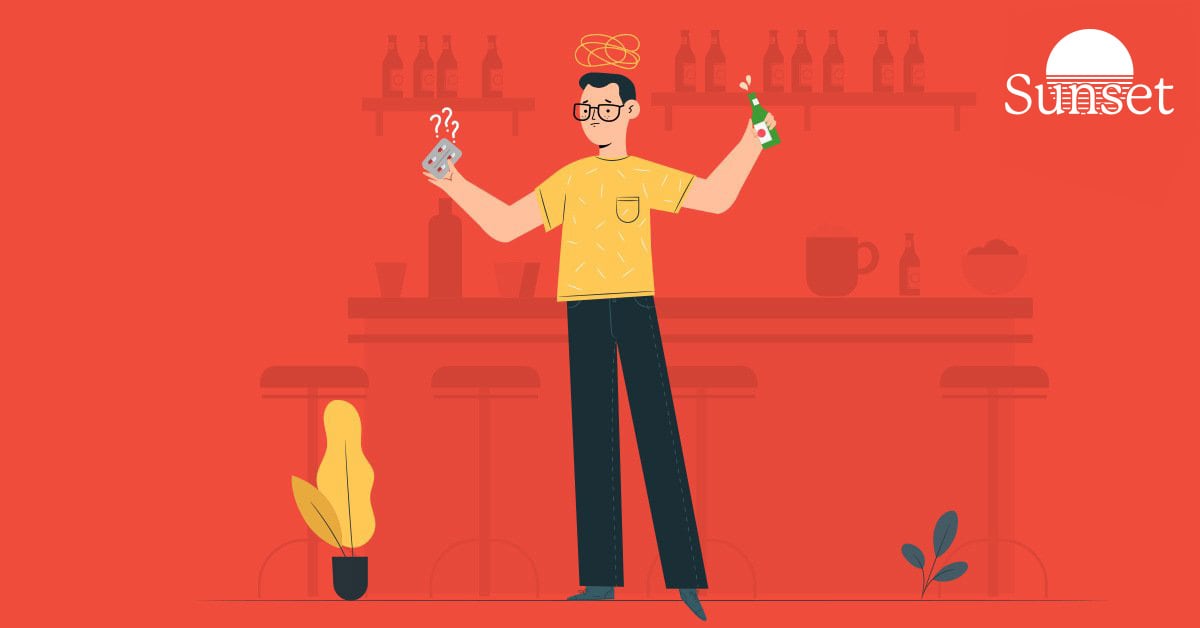
⏱️ TL:DR ∙ Article in 20s
While Pepcid or Zantac may temporarily alleviate Asian glow when drinking, studies show this masks dangerous alcohol buildup, increasing both cancer and disease risk significantly. Experts advise against it because it allows those taking these antacids to drink more that their body is able to handle. Safer options are available over the counter that ease symptoms without increasing health risks.
- Dangers of Zantac and Pepcid
- Zantac, Pepcid, and alcohol: toxin build-up
- New risks discovered
- Do Zantac or Pepcid help Asian Glow?
- Antihistamines side effects
- Pepcid and Zantac alternatives
Share this article
Copy and paste this link
Turning red and feeling uncomfortable after a few sips of alcohol is an all-too-familiar experience for many of us. This frustrating reaction, commonly known as "Asian glow," can put a damper on social events and leave you feeling self-conscious. In an attempt to mask these unpleasant symptoms, some have turned to taking over-the-counter drugs like Pepcid AC before drinking. However, mixing alcohol and certain medications can be risky.
This article will break down what exactly causes Asian flush, why taking Pepcid or similar drugs is not the best solution, and safer alternatives you can try instead, such as Asian glow pills. Our aim is to equip you with the knowledge to make informed decisions about managing Asian glow symptoms, so you can finally enjoy alcohol again without unwanted side effects.
First, let's look at why some Asians get flushed in the first place after drinking even small amounts of alcohol.
Why Using Zantac Or Pepcid For Asian Glow Is Dangerous
First - why should you be worried about Pepcid and alcohol? Is there any real cause for concern when using Pepcid for Asian glow? Yes - there is.
Using antihistamines like Zantac or Pepcid for Asian glow is dangerous. This is because it can mask important symptoms that are telling the body to stop drinking alcohol.

With fewer unpleasant symptoms, the drinker may continue drinking without any sort of acetaldehyde reduction.
This practice is dangerous because it allows ALDH2-deficient individuals to consume more alcohol and increases their risk of acetaldehyde toxicity.
Dr. Daryl Davies, Ph.D. and director of the Alcohol and Brain Research Laboratory at the University of South Carolina, confirmed this danger in a recent article. He stressed that the alcohol flush reaction is the body telling the drinker to slow down and commence hydration:
“Using histamine-2 blockers to reduce the ‘Asian flush’ can escalate alcohol intake and increase the risk of stomach cancers, esophageal cancer and a type of skin cancer called squamous cell carcinoma … the use of H2 blockers may allow someone suffering from Asian glow to drink higher levels of alcohol, but this person shouldn’t do that. It’s just not smart.”
How Using Zantac or Pepcid and Alcohol Together Can Lead to Toxin Build-Up
So - where does the danger lie when using Pepcid with alcohol?
While you may see some level of relief when using these drugs, Zantac or Pepcid and alcohol are not a great combination on your liver.
Dr. Davies is alluding to a series of warnings issued by the National Institutes of Health (NIH) for people with an alcohol flush reaction.
In a media release, publicizing research from scientists at the National Institute on Alcohol Abuse and Alcoholism (NIAAA) and Japan's Kurihama Alcohol Center, they stated that:
“…individuals with one copy of the inactive variant (i.e. Asian flush) are about 6-10 times more likely to develop esophageal cancer than are individuals with the fully active ALDH2 enzyme who drink comparable amounts of alcohol. Notably, these studies showed that individuals with the inactive variant who drink the equivalent of 33 or more U.S. standard drinks per week have a 89-fold increased risk of esophageal cancer compared to non-drinkers.”
In response, the International Agency for Research on Cancer mirrored these sentiments by classifying acetaldehyde from alcohol as a group 1 carcinogen:
“The agent (mixture) is carcinogenic to humans. The exposure circumstance entails exposures that are carcinogenic to humans.”
When taking an antihistamine like Pepcid for Asian glow, drinkers may not realize that they are consuming more alcohol than usual. Doing this results in an over-exposure to toxic acetaldehyde.
Due to the absence of the typical red face, the drinker may think that they can consume more alcohol without any adverse symptoms.
If they continue to drink alcohol, acetaldehyde will continue to accumulate in their system and expose them to a Group 1 carcinogen for longer.
Newly discovered risks of using Zantac for Asian glow (Ranitidine)
You know now that using Pepcid with alcohol can be detrimental to your health and bring about toxic buildup. Now, let's analyze a similar drug - Zantac. What do you need to know about using Zantac for Asian glow?
Users of Zantac for Asian glow should take note that GlaxoSmithKline is recalling their popular heartburn medicine Zantac in all markets.
This move comes only days after the FDA discovered what they described as “unacceptable” levels of a probable cancer-causing impurity in the drug.
In response to this, retailers across the United States are suspending the sale of over-the-counter heartburn drugs containing ranitidine (such as Zantac).
In an article about the recall of Zantac, Joshua Gagne, PharmD, ScD explains:
"The FDA has clarified that the testing method that found the “extremely high levels” of NDMA applied high heat, at a level much higher than normal body temperature. In other words, the testing did not reflect typical conditions under which the medication would be stored or taken."
Therefore, at the time of writing, the extent of the risk remains unclear. That said, generally speaking, combining these kinds antihistamines with alcohol is still questionable. It's better not to exposure yourself to unnecessary risks.
Do Zantac or Pepcid even help with Asian glow?
Now you are aware that there may be dangers associated with combining Zantac or Pepcid and alcohol. But does the risk even carry any reward?
Discussed below are clinical trials linking the action of antihistamines, such as these two OTC drugs, to one or more symptoms of alcohol flush reaction. As mentioned above, antihistamines were not created to treat Asian Glow symptoms.

Erythema (skin flushing)
A 1988 study headed by N.S Miller, author of “The Pharmacology of Alcohol and Drugs of Abuse and Addiction”, examined the role of histamine in the expression of alcohol sensitivity in oriental subjects.
One-half of the test subjects in the study got 50 mg of an H1 receptor antagonist similar to Zyrtec and 300 mg of an H2 receptor antagonist identical to Pepcid AC and Zantac. The second half was the placebo group.
The most apparent difference between the antihistamine group and the placebo group was in their degree of flushing. The antihistamine group showed a reduction in skin redness.
Combining drugs like Pepcid and Alcohol leads to breathing problems
A subsequent 2004 study aimed to look at why Japanese asthmatics experience worsening of asthma symptoms after alcohol consumption.
They found that the alcohol by-product acetaldehyde increased airway muscle tone and made it harder for subjects to breathe.
This effect was associated with an increase in the release of histamine. An H1 receptor antagonist similar to Zyrtec was able to reverse this effect.
Side-Effects When Taking Antihistamines like Pepcid With Alcohol
As with all medications, antihistamines come with side effects that the user should be aware of, including when using them to combat alcohol-flushing symptoms.
When used for their designed use, a lot of the antihistamines mentioned have similar side effects. Of course, medications impact everyone differently.
Pepcid AC side effects include:
- fatigue
- dizziness
- headache
- muscle pain or cramps
- dry mouth
- nausea
Zantac side effects, like other antihistamines, are uncommon and are usually mild. Some side effects you may experience with Zantac are things like stomach pains, constipation and nausea.
Like Pepcid, Zyrtec carries a lot of the same side effects, like fatigue, dizziness, headache, nausea, and dry mouth, among others.
Allegra side effects include things like:
- nausea
- feeling sleepy
- headache
- dry mouth
- feeling dizzy
A significant side effect to keep in mind for all of these antihistamines is fatigue or drowsiness, especially if you intend to drive.
This problem can compound when consuming alcohol and taking one of these antihistamines for use against alcohol flushing. Mixing things like Zantac and alcohol means that both the alcohol and the antihistamine can cause fatigue simultaneously.
Alternatives To Pepcid AC, Zantac, And Zyrtec For Asian Flush
Are there possible alternatives to Pepcid AC, Zantac, and Zyrtec for the attenuation of Asian flush symptoms? Of course, choosing not to drink alcohol is the most obvious solution. But what if you still want to drink alcohol from time to time?
The good news is yes - there is a solution that doesn't require you to stay sober for the rest of your life. It's not an Asian glow patch, either.
You can learn how to get rid of Asian glow safely and effectively. The solution is Sunset's Asian flush pills. This treatment is proven to work and can help you regain your social life and enjoy a few drinks with friends - without the stress and embarrassment that comes with flushing.
If you want to figure out how to prevent red face when drinking once and for all, just head over to our site and get your bottle ordered. The next time you're heading out to the bar or over to a friend's house, you can take your Sunset pills pre-emptively and make facial flushing a thing of the past!
Final Thoughts On Using Zantac Or Pepcid For Asian Glow From Alcohol
Now, you should be aware that using Zantac or Pepcid for Asian glow or sudden alcohol intolerance is not a good long-term approach. In an emergency situation, sure, you may be able to find some relief from taking an antihistamine. But at the cost of your health and well-being?
It's clear that the overarching health concerns of using antacids and other antihistamines like Pepcid and alcohol outweigh the slight improvements seen in symptoms. So - using Zantac or Pepcid for alcohol-induced flushing is a bad idea. Instead, rely on Sunset pills - a tried and true solution with no negative health risks!
Enjoy drinking again and get Sunset Alcohol Flush Support for
33% off while stocks last!
What’s inside?
We use a pharmacist-formulated blend of Glutathione, Dihydromyricetin, Cysteine, L-Theanine, & B Vitamins to stop alcohol flushing before it can begin.
Learn more
94% of people who try Sunset are satisfied with the results.
